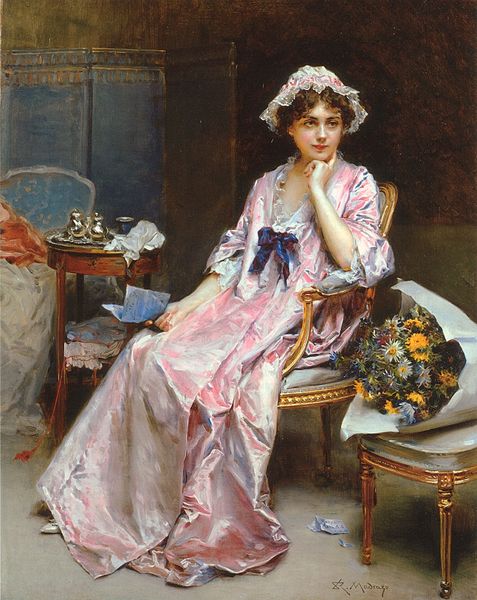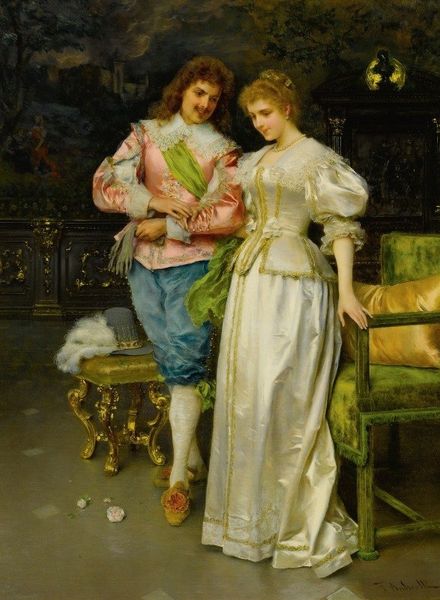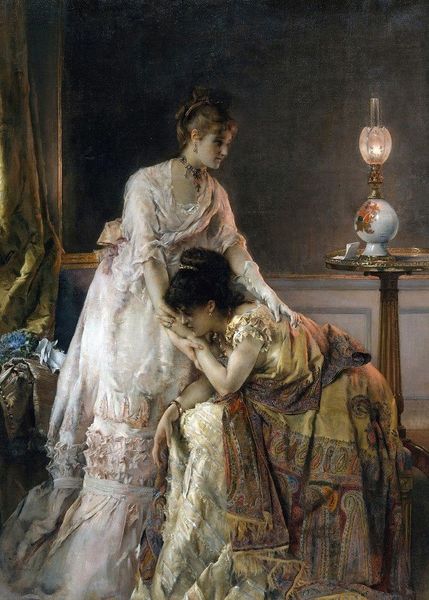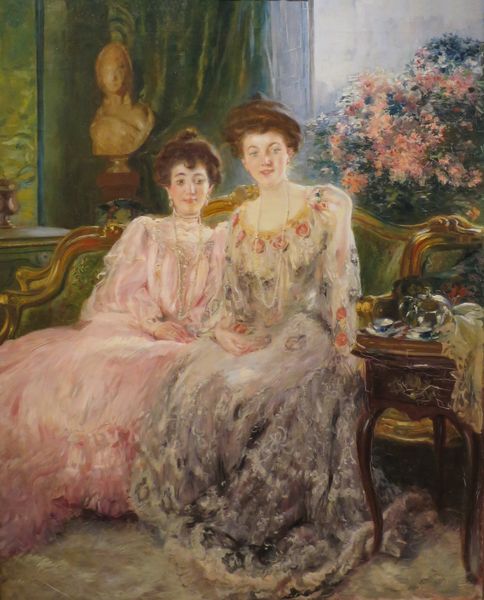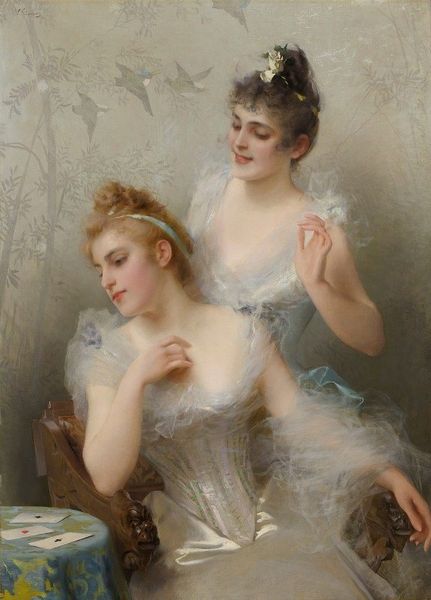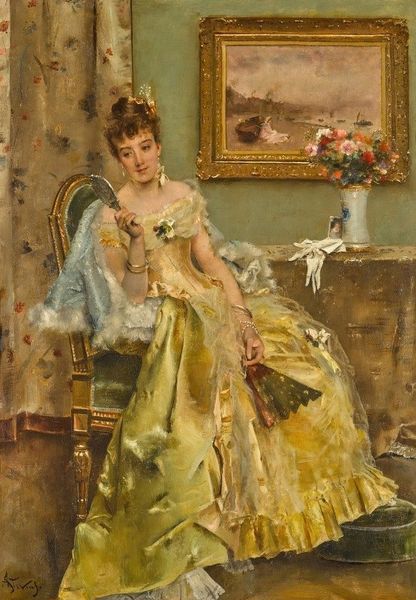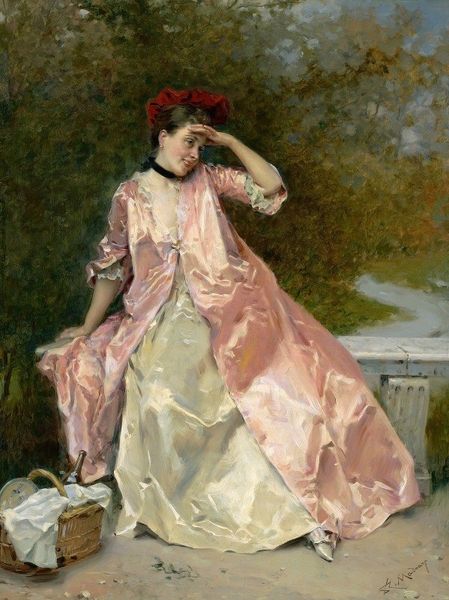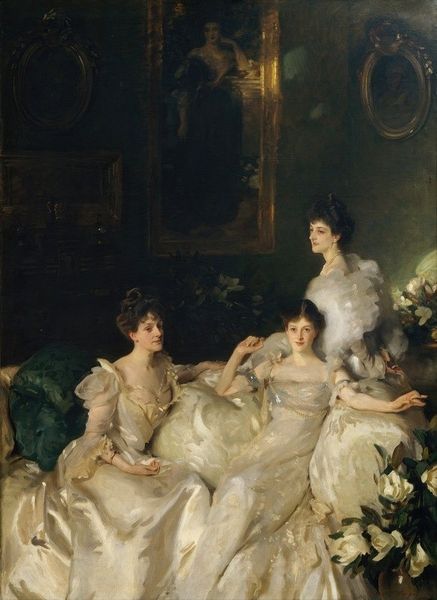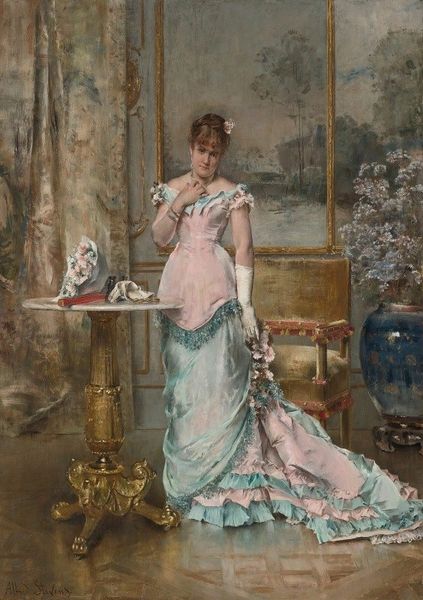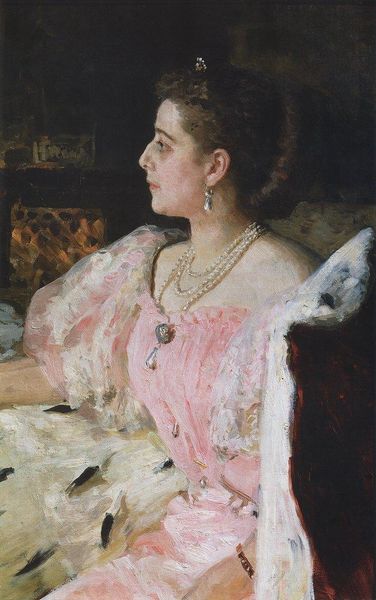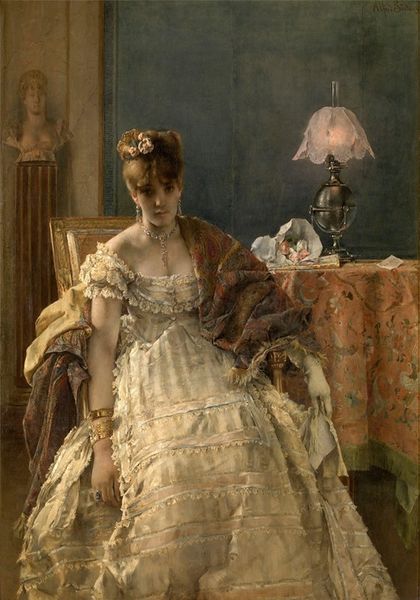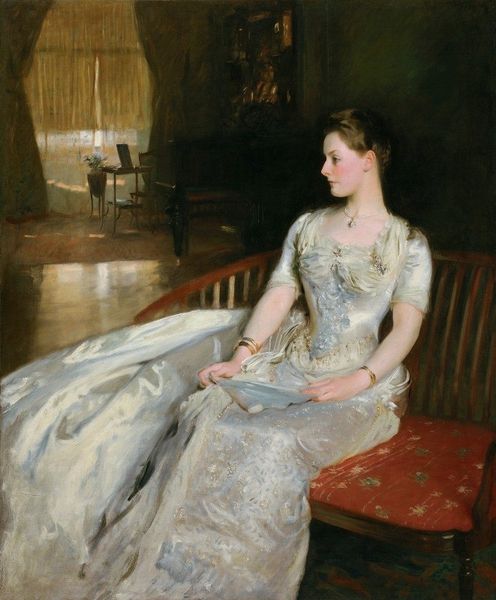
Copyright: Public Domain: Artvee
Curator: Sargent's "Mrs. Fiske Warren and Her Daughter Rachel," completed in 1903, strikes me with its rather subdued color palette and almost languid, interior feel. Editor: The figures, positioned amongst gilded decorative elements, evoke symbolic gestures of early Renaissance representations of motherhood and dynastic succession, particularly given that her husband's wealth stemmed from printing and textile empires. There’s a deliberate display of material and the almost translucent quality of her garment suggests moral purity, wouldn’t you say? Curator: Well, to jump from textiles to moral purity might be quite a stretch, wouldn’t you say? But the intentional use of ornamentation certainly provides cues that these are members of the elite class at the turn of the 20th century, during a volatile period of rapid industrial change. Editor: Perhaps, but the choice of angelic golden ornamentation implies far more, nodding toward the sitter’s aspirational goals of elevating herself to the sphere of sainthood or divinity through motherhood and domestic propriety. These sorts of emblems offer narratives around the family name that aren’t always rooted in the politics and culture of that moment, although it could be easily assumed that those are interconnected. Curator: I see your point regarding the classical overtones of Sargent's aesthetic language here, as this was not a commissioned piece; instead, he offered to paint Mrs. Warren and her daughter, resulting in their close and engaged positioning. The fact that he selected them for subject matter is also indicative of social and gendered constraints and constructs of the era that Sargent often deftly addressed and often disrupted with many of his sitters. Editor: Yes, the intertwining of figures emphasizes continuity between generations. Note also how her body language reinforces those readings, conveying care through slight gestures while positioning the figures to read almost like an icon of modern femininity in the American gilded age. Curator: Considering it more thoroughly, situating Sargent's portrayal within discussions of wealth, class performance, and gender, it suggests avenues for a renewed and deeper interrogation of the domestic sphere at the time. Thanks for illuminating so many important factors! Editor: The symbolic reading enhances understanding, adding multiple levels to how we perceive it within this collection and beyond.
Comments
No comments
Be the first to comment and join the conversation on the ultimate creative platform.

